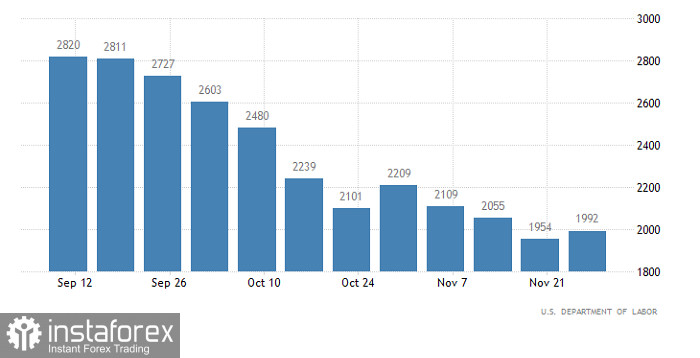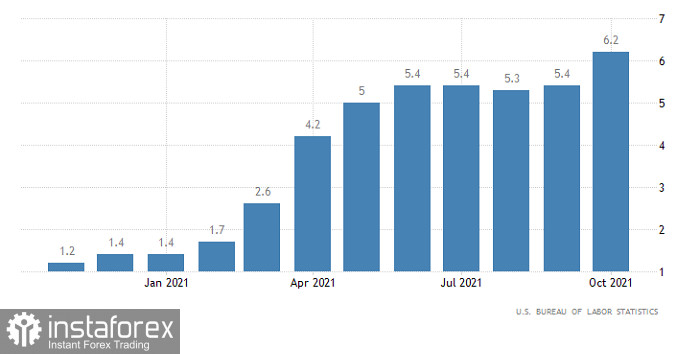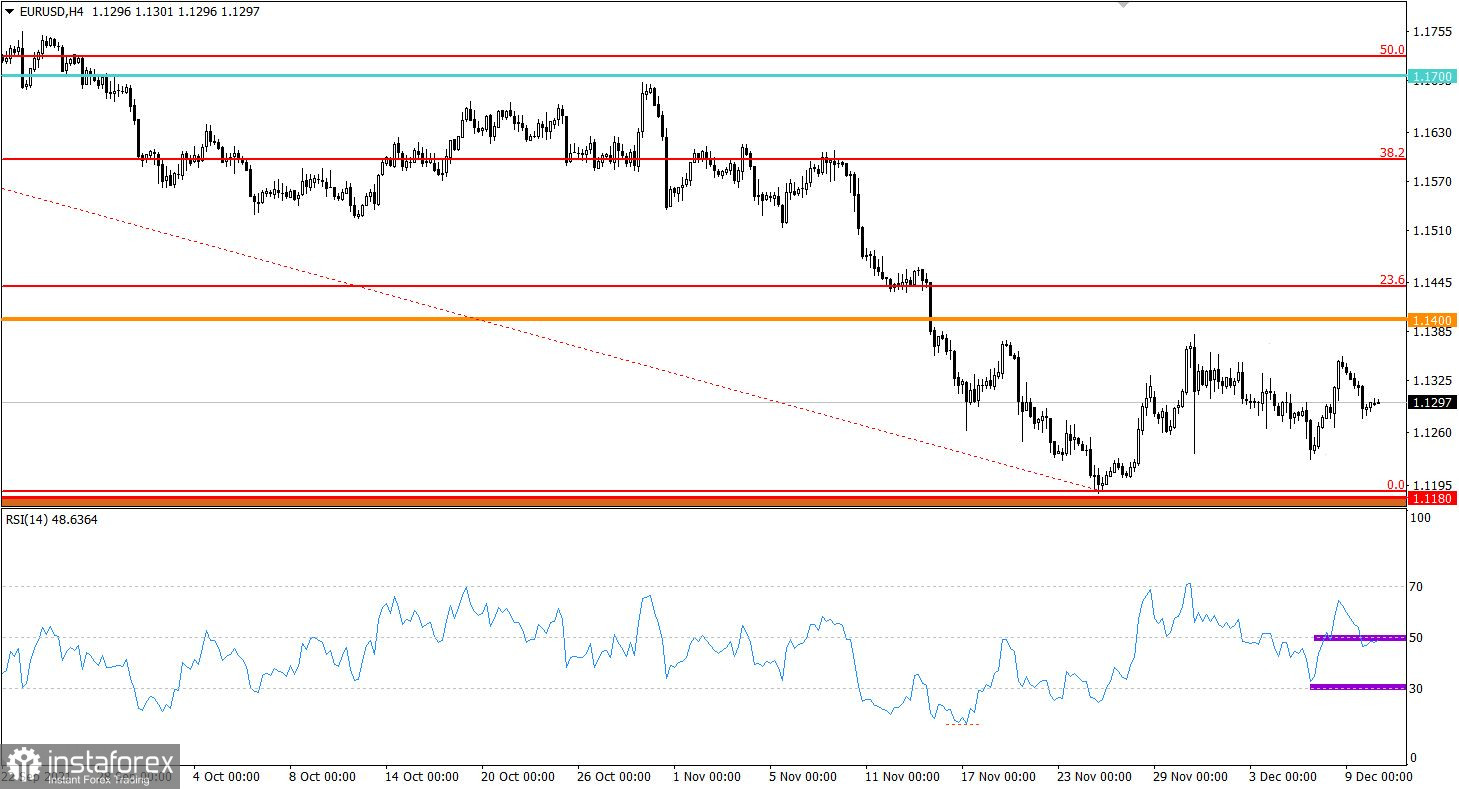The single European currency was gradually losing its positions throughout the first half of yesterday's trading. But the data on repeated applications for unemployment benefits in the United States turned out to be much worse than forecasted, as their number increased by 38,000, instead of decreasing by 72,000. Immediately, the common European currency stopped and went into a pronounced sideways movement. However, the number of initial inquiries, which should have grown by 3,000, decreased by 43,000. In other words, the total balance of applications still decreased. Just not what was expected. Moreover, repeated applications, in principle, carry more weight. Nevertheless, in general, the data were rather neutral, so stopping the euro may turn out to be premature and unsupported.
Number of re-claims for unemployment benefits (United States):

The main event not only of today, but of the entire week, is the publication of inflation data in the United States. Moreover, this will affect the policy of the Federal Reserve. After all, the monetary authorities know only one way to curb inflation - raising interest rates. This measure has not yet been resorted to for fear of destructive consequences for the economy. Which has not yet recovered from last year's shock. But inflation has reached a record high in more than forty years, and apparently continues to rise. At least its growth is expected from 6.2% to 6.9%. So the Fed seems to have no choice but to urgently raise rates. And this may happen as early as next week. The importance of today's data is that if the forecasts are confirmed, then investors will finally believe in this scenario of events. Well, the rise in interest rates increases the attractiveness of the currency, the rates for which have just grown. Simply put, rising inflation will push the dollar higher.
Inflation (United States):

The European currency moved to decline against the US dollar after the price converged with the area of the local high on November 30. As a result, the quote dropped below the value of 1.1300, where bears had a chance to resume the downward cycle.
The RSI technical instrument crossed the 50 line from top to bottom in a four-hour period. This step is regarded by market participants as a possible signal to sell, where an increase in the volume of short positions may well appear in the 30/50 region.
The downward trend persists on the daily chart. A correction cycle has appeared in its structure, in which the quote moves.
Expectations and prospects:
Keeping the price below 1.1300 may well lead to a movement towards the December 7 low at 1.1227. This step in the future will lead to a gradual weakening of the euro towards the area where forces interact - 1.1160/1.1180.
Traders can consider an alternative scenario of market development in the event of a change in trading interests. A signal to buy the euro will appear when the price is staying above the value of 1.1355.
Comprehensive indicator analysis gives a sell signal based on short-term and intraday periods due to the downward movement.






















